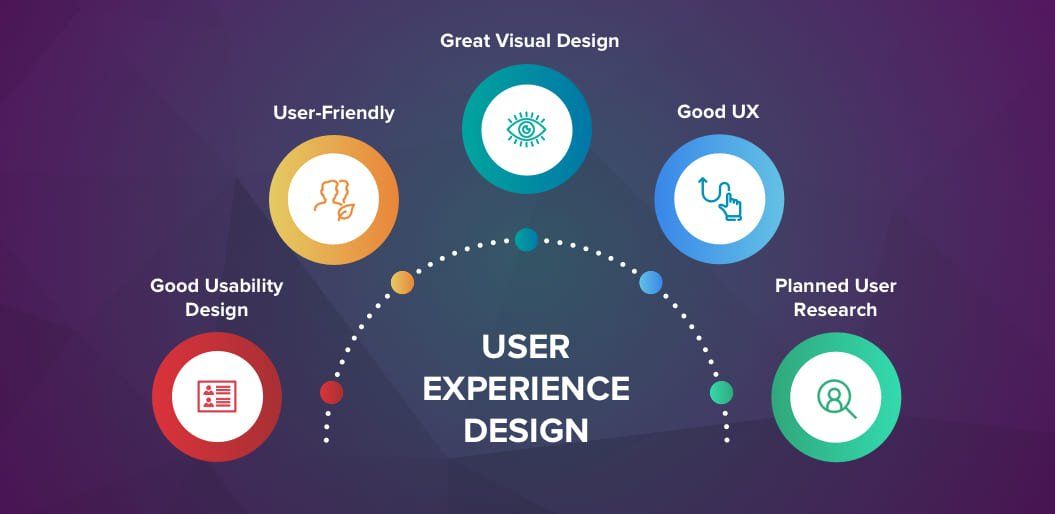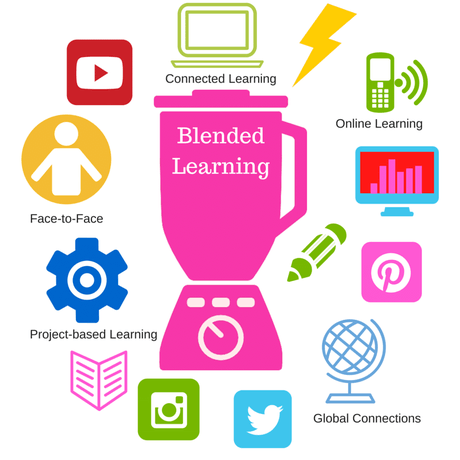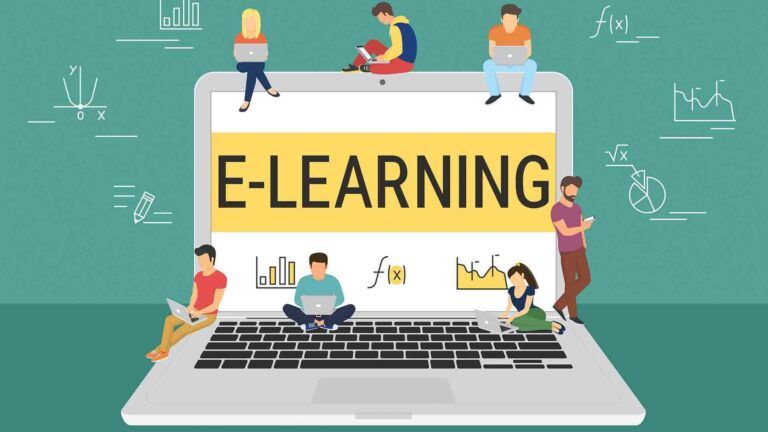BLOG

The purpose of visual design is to improve the look and appeal of a design or product. Images, space, color, layout and typography are elements in this process. Aesthetics is not the only point in visual design. A designer uses all these elements to create the best interface to optimize UX and convert leads. Good visual design is important for several reasons. The first impression a product makes on a user is in its design. We are not aware of it, but we see the effect of visual design in digital media and marketing materials. Visual design and online learning In the last decade, training and development have transitioned to online platforms as opposed to the classroom. eLearning offers people a chance to learn at their pace and get important certifications. In this context, visual design plays an important role in course material presentation. How? A good online learning module draws the users’ attention to the important information. This is done by a simple change in font size or text color. Introducing colors and patterns establishes a sense of order in the material. Whether it is virtual learning or blended learning, good design presents material in an easy-to- understand manner. White space is also used a lot in design to separate different concepts. These elements are important not just for online learning but marketing on social media as well. Guiding principles of visual design As users, we react to materials we see – we like it, or we don’t. If we had to explain it, terms such as unappealing, crowded or awful use of color would be used. Designers use the following principles to guide them in their work. All of these apply to all marketing material and training and development modules equally. 1. Scale: Scale is a concept which defines importance of elements using size. Larger items and their placement tend to draw user attention. Next time you look at a page, take note of this feature. 2. Balance refers to how information is distributed on a page. To keep a page looking good, information is placed on equally on both sides of the axis – vertical or horizontal. 3. Visual hierarchy refers to the method used to guide the eye to all the elements present on a page, in order of importance. 4. Contrast refers to the placement of dissimilar items to convey their essential differences. By using different colors to highlight this, users are able to register information and remember it in the same form later. 5. The Gestalt principle refers to the idea where people are able to see the whole picture instead of just the individual parts. These principles are integral to design because it is not just about creating pretty pages. Good visual design enhances user experience by making them want to visit some sites multiple times. Users may not be able to explain why, but they intuitively know why they like some sites/pages better. This is because the above principles are reflected in all material – whether it is e-learning modules or digital marketing. The power of a good page is essential to creating a quality product and brand.

With the advent of technology and online tools, training and development in companies have undergone a massive transformation. In modern-day companies, a new type of learning — blended learning —is slowly gaining traction. This form of learning brings together the traditional learning provided by instructors and the flexibility and independence of computer-based learning . Traditional learning certainly puts learners at the hands of a skilled instructor who conducts face-to-face sessions. But it’s not always possible to conduct such sessions in today’s virtual nature of workplaces. This is where blended learning can prove extremely beneficial for companies. The “traditional” elements of instructor-led learning are provided online to learners in real-time with the help of live meetings and sessions. Below are a few benefits that blended learning has in store for modern-day companies: 1. Significant saving in time Blended learning can save companies a lot of time while providing training sessions to employees. It leverages online modules to provide the needed information to learners while also scheduling training sessions with skilled instructors to clarify doubts and track learning . Both online and in-person check-ins are possible to track the progress of learners —something which would have otherwise been performed by the HR manager in a much more time-consuming way. 2. Whopping money savings Classroom training sessions can cause loss of productivity of employees—something that can cost the company a huge sum. Moreover, developing online classes require companies to hire an e-learning professional who would charge an upfront cost. But with blended learning , companies can save on costs in a valuable way. This clearly reflects on their annual cashbooks. Training sessions can be conducted without investing huge sums of money and learners too can balance learning with their routine tasks without being unproductive. 3. More flexibility for learners Different employees will have a different style of learning . While some may be quick learners , other may want to follow their own course. Each and every employee will have unique learning needs and companies have to meet them effectively to get real results. This is where blended learning makes the learning regime flexible for self-paced learners. It provides online programs that can be pursued by learners at their own pace and as per their own preferences. This is particularly beneficial for busy working professionals. 4. Customizable training sessions Traditional instructor-led training sessions often take a haphazard approach to certain subject matters. But combining them with online courses create a unique learning opportunity for employees. They can customize their training sessions to meet their existing level of knowledge and skills. Given their different learning needs, employees can use blended learning modules to gather skills that they lack. The option to customized training sessions can make learning more meaningful by matching the course content with their skill-acquisition needs. The above are some of the many benefits that modern-day companies can enjoy by adopting blended learning . It comes as one of the most effective methods of training employees. With a combination of both offline and online tools, blended learning can make learning really fun for employees and increase their competitiveness in the company.

You may have a great e-learning business or a training and development firm doing wonders. But, in the age of digital media and social media marketing , that’s not going to matter if you don’t pay attention to graphic design . Graphic design can be the reason for customers to seek out your virtual learning services or associate with your brand’s offerings. Here are some graphic design mistakes you should avoid in the age of digital media . Getting your colors wrong Colors used in graphic design are a big part of what attracts the attention of your target audience and too many colors will get you the kind of attention you don’t want. Bold colors can help your content stand out but using too many bold colors together will only hide your logo and make it difficult to spot your message. Using stock photos If you end up using too many stock photos, you’ll just come across as unprofessional or cheap to your target audience. Several popular stock photos may also be overused, meaning that you’re not bringing anything new to your audience. This is a marketing move you don’t want to be making because it takes away all originality from your brand. You should also buy the stock photos you’re using so that you don’t end up with a watermark or a poor-quality image. Coming up with a design that lacks versatility Your design and logo are going to be put on a lot of different platforms or media that your brand is doing business with. You need to make sure it’s a versatile design that works well on different platforms and media. You don’t want to end up having to make a new design for every big announcement you want to make with regard to your business. Messing up your fonts Whether it’s blended learning , online learning , or any other type of business, your fonts need to be legible and using just 2 or 3 fonts can achieve this. Smaller designs can make use of just one font. While you may think it’s fancy to mix up fonts, it can be really distracting to a reader. You should also ensure proper kerning of your fonts, which means that you adjust the spacing between letters. This maintains consistency and makes it easier for your target audience to grasp your message. Breaking the hierarchy The hierarchy in any marketing design is what directs the reader’s eyes to the most important information they need. You don’t want them to jump from one point on your design to another looking for the information they need. Make sure the most important information stands out in your design and let their eyes move naturally along the rest of the design. Not taking your target audience into account When you’re creating a design , remember you’re doing it with a specific target group in mind. It’s not about what you like or don’t like. It’s about the needs of your target audience and the latest trends. Failing to proofread Proofread everything that goes on your design and have someone else go over it for you. Poor grammar can make you look unprofessional and cost you customers. Ignoring multi-platform compatibility The growing popularity of social media and other forms of digital media is due to the usage of mobile phones. Make sure your design is compatible with multiple platforms, otherwise you could miss out on a segment of your target audience.

With the growing popularity of digital media , including social media, business marketing has taken on a whole new meaning. Virtual learning, training, and blended learning can occur a lot faster and more effectively in the digital age. Online learning can also take place through social media. Social media marketing makes it possible for you to direct your intended audience from your channels across various platforms to your website. Whether your business is involved in training and development , e-learning , or anything else, web design plays a crucial role in attracting and retaining your audience. Follow these tips to take your web design to the next level. Don’t let it hang Potential customers expect websites to load fast and they aren’t going to wait around to give you a second chance. Make sure you’re on top of your game when it comes to website load speeds because it could make a frustrated potential customer seek out your competitor. Make it easy to navigate When you’re marketing to your potential customers, you need to make it easy for them to navigate your website. This means having all the menu options in place so that they can be directed to what the next step is in their buyer journey. Use contrast and space to your advantage Contrast, when used correctly, is effective in directing the gaze of the reader to the parts that you want them to see. This means using contrast when it comes to colors as well as fonts. A bold color paired with a light one can help your text stand out and capture the attention of your audience. Stick to using one or two fonts at best. Too many can throw the look of your website off balance and put off your digital media audience. You also want to use space wisely. A cluttered website isn’t pleasing to anyone’s eyes. Keep it simple In the age of digital media , online learning is possible anywhere and at any time. While it won’t take very long for someone to look up jargon you’ve used on your website, you’re more likely to keep them on your website a lot longer if you keep it simple. Don’t complicate things by using fancy words in an attempt to impress your target audience. Simplicity is key and it can benefit you a lot more. Make it visually appealing Visuals have higher retention rates and can communicate messages far more effectively than words can. Take professional pictures of your products, make high-quality videos, and use infographics to convey your message to your target audience. Optimize for mobile and tablet Most people today access the web through their mobile phones. Smartphones have made it possible for people to post on social media at their convenience and navigate the web. If you want to tap into the needs of your target audience, you need to make it convenient for them to access your website. This means optimizing your page for mobile and tablet. Include CTA Display clear CTAs on your website so that you can direct anyone navigating your page to their next course of action. Whether you want them to sign up for your newsletter, download your brochure, or make a purchase, you must make it clear so that they can take the necessary action.

E-learning and digital teaching techniques are becoming progressively more institutionalized. It is estimated that before 2030, the industry will be worth nearly four hundred billion dollars. This readily available information is great for companies and organizations that are looking to train and educate a remote workforce . E-learning is a productive and simplified form of learning for individuals to take advantage of, and with the new technology available in 2020, services that provide e-learning tools are even more sophisticated and popular. Indeed, the pros of e-learning for remote workforce s are numerous and undeniable. First and foremost, e-learning offers greater levels of retention for people who are taking courses. Up to sixty percent more information is retained by people being fed information via electronic learning . In fact, roughly ninety percent of companies utilize e-learning for their employees today compared to less than five percent fifteen years ago. The industry is rapidly expanding and for good reason. The results are clear and quick. Employees who are being trained digitally receive their knowledge much faster than traditional learning techniques . This is not to say that traditional le arning and training is ineffective, but instead to point out that it is expanded upon in a digital format. Another great pro of e-learning , especially for businesses, is that it can deliver information to individuals five times faster than in-person instruction can. To maximize time and efficiency, businesses would do well to employ digital learning techniques. Their speed and retention are clear markers for their success in the workplace. And, in addition, the market for commercial e -learning has grown nearly a thousand percent since it was first used for business. This growth is not going to change but to produce results, which show time and time again that companies, even those that do not do business remotely, benefit from electronic learning for their employees. In addition, e-learning is better for large groups of incoming workers. The material can all be delivered at almost the same time, allowing employees to learn simultaneously and in simple sessions. This eliminates the need to have workers come in in divided groups to receive lessons and training , allowing companies to use workers for intended tasks much sooner than they would traditionally be able to get to work. Not everyone will agree that e- learning is a riveting way of indulging in information, but it is clear that content is retained, and workers are prepared in a much quicker and simpler way than is the case for traditional learning . E-learning becomes more and more popular by the day, and it continues to grow because of the results, as stated above. The pros of digital learning are highly valuable for businesses. It makes training faster than traditional learning and workers retain much more information. It makes delivering information much quicker, and it allows companies to provide courses to large groups at the same time. It is not difficult to then see why e-learning has been so widely adopted. In short, it makes the process of providing information to employees exponentially easier, and companies should not shy away from implementing digital learning techniques.

Instructor-led training is a traditional and successful way to deliver necessary information to employees. It has been used and developed for years, and the unfortunate nature of the coronavirus pandemic is preventing these training sessions from developing as usual. Fortunately, there is still a way to deliver such information to the people that need it. Digital learning is emerging now more than ever as a way to effectively and safely bring information to employees, students, and anyone else that may need it. In fact, e-learning has been being utilized in the corporate economy for years, and roughly ninety percent of businesses have some form of the e-learning program . This is because digital learning is effective and can help individuals learn and train no matter where they are. The first and primary reason for using e-learning for employees during the pandemic is that it can increase worker revenue by over two hundred percent per person. That sounds like too big a number to be real, but that is true. Employees that have been trained with e-learning techniques retain information better and are more capable of doing their jobs. By employing these services during the global pandemic, businesses can make up for the lost time and can take the opportunity to catch workers up to speed (or perhaps even deliver more information than is typically provided in normal times). Just as the percentage of students in the United States taking digital classes has been steadily growing (and is now skyrocketing), businesses are at the epicenter of an extreme move to electronic learning . This is because the benefits for employees and productivity are simply undeniable. And there are more benefits to using electronic learning as a training alternative due to coronavirus. New workers and large groups of employees can be trained quickly and easily and, most importantly, at the same time. There is no need to split up groups for separate training or one on one conversation. Instead, digital learning provides a product that can be delivered with uniform success to all workers who need it at roughly the same time, meaning businesses do not have to spend so much energy on organizing and training workers. This is clearly a great reason for having digital classes in response to the pandemic. Workers do not need to be constantly monitored but can instead be trusted with material and left to learn it quickly. Finally, speed is the final most important reason for businesses to adopt e-learning techniques during the COVID-19 pandemic. Unlike traditional learning , digital programs can deliver information at a rate five times faster than average. This is especially important, now more than ever, when companies are losing business and are being forced to make the inefficient switch to online operations. By using the digital course in this time to engage with employees, information can be delivered at an exponentially faster level than companies are currently used to, and business can proceed much soon than expected. Nobody wished for the coronavirus pandemic to rock the global community, and businesses have been hit particularly hard. Luckily, even though many employees now work from home and standard business operations have changed, it is possible to maintain efficiency and manage employees’ needs with relative ease. E-learning courses are the new productivity wave, and even during a pandemic, they provide undeniable benefits to businesses and employees.

Digital learning was become more and more popular by the day before the coronavirus pandemic rocked the international community. About ninety percent of businesses had already switched their business models to include some kind of virtual learning solution . Now, however, the situation is different. E-leaning is not rapidly expanding, it is exploding. The market has increased exponentially since the start of the pandemic, and even if only ten percent of the newcomers stick with the techniques (and it will be much more than that), commercial life will change forever. For this reason, it is important to consider embracing digital learning , as it quickly becomes the future of corporate operations. Customers and employees should now be trained via the internet whenever possible. Especially for employees, digital learning is an incredible benefit that increases revenue per worker and helps retain information. For customers, the experience can be changed by providing need information with ease and simple techniques. Taking advantage of digital learning makes businesses more productive and efficient when it comes to profits. In addition, digital classes are easy to use and simple to understand, which is part of why their retention levels are so high, and anyone can complete a majority of them without difficulty. There is also the important matter of speed that relates to digital learning . Companies can provide information at a much faster rate than is normally possible for employees or customers. Figures state that e-learning can teach more information than a traditional lesson in half the time. It does not always have to be strenuous information, but commercial organizations should be sure to take advantage of the possibilities that digital learning offers. After all, as stated above, digital learning is the future of delivering information. Commercial environments that do not embrace it will be behind others that do. Because virtual courses have the power to boost employee revenue, company revenue is also increased. A business that embraces e-learning is making more money than one that does not in less time… and what company does not want that. E-learning has not been around for very long, so then why have so many organizations and institutions adopted it? The answer is simple; it works. Once more, it should be stated that e-learning is the future of training and providing information and needed knowledge to individuals. Its benefits are numerous and undeniable, and its methods are sound and simple to understand. Because so many businesses are being forced to move in the direction of e-learning , many are discovering how much they like it and how helpful it is for workers. For these reasons and many more, companies should get used to the idea of employing digital learning strategies , and should the truth of the power of electronic training and teaching.

E-learning is incredibly beneficial when delivered in the proper way. In many ways it is more successful than traditional learning , cutting teaching times in half and contributing to greater retention in individuals who are being taught. Because it is already good for companies and schools to take advantage of, organizations should be thinking about how to implement it after the COVID-19 pandemic. Nobody expected this virus to rock the global community, but it did despite many nations’ best efforts. Therefore, not only for preparation but also for efficiency, organizations should make sure to have a ready-to-launch e-learning program available even after the pandemic ends. E-learning is a teaching method with proven results. In most cases, digital learning increases the velocity of the material taught by five times. Because of this, e-learning is used for many businesses trying to increase training times and make workers more effective. But it can also be used in emergency situations. In school or businesses for example, on days when extreme weather prevents people from leaving the home or institutions are rocked by sickness, e-learning can be used to educated people safely and efficiently from the home. By having programs ready for deployment, organizations can be sure that they are not wasting time and energy on lost days. In addition, e-learning courses can be provided to individuals who are absent or unable to attend events. By having digital methods available, people no longer have to worry about being left behind or missing days for the unavoidable. This is incredibly effective for commercial environments, much more so than for schools. In a business setting, if workers find themselves unable to report for a task, companies no longer have to worry about an employee left behind lacking proper information. Readily available courses can be used to remedy the situation with simplicity. The fact is, e-learning courses make teaching much easier. Indeed, these methods have already been employed in basic situations for years. Many retail environments, for example, take advantage of digital learning opportunities to train employees quickly and effectively. By having these kinds of courses available for emergencies, organizations can be sure to experience many of the same successful results. Finally, e-learning learning , especially when used during situations that were unforeseen, saves time and money. E-learning makes people more productive and, in an emergency, and eliminates the need for individuals to become reacclimated to their work environment once normal operations begin. This saves time and money for businesses faced with an inability to complete jobs for a certain deadline or customer in an unknown situation. Indeed, with education too, schools can save time by giving kids tools to learn from home and money by avoiding lengthening the school year or reteaching information to students. In nearly every situation, the benefits of having e-learning courses available for the unknown are undeniable. Digital learning is growing rapidly because of its remarkably successful and innovative techniques. While this does not mean that it is guaranteed to make everyone a genius, it is clear that having an electronic course prepared for the aftermath of COVID-19 is a smart idea. With these courses, institutions and organizations no longer have to fear for lost time or catastrophic circumstances. By being ready with educational tools for people to take advantage of, professional groups can be more focused on working effectively and less concerned about unknown possibilities.

